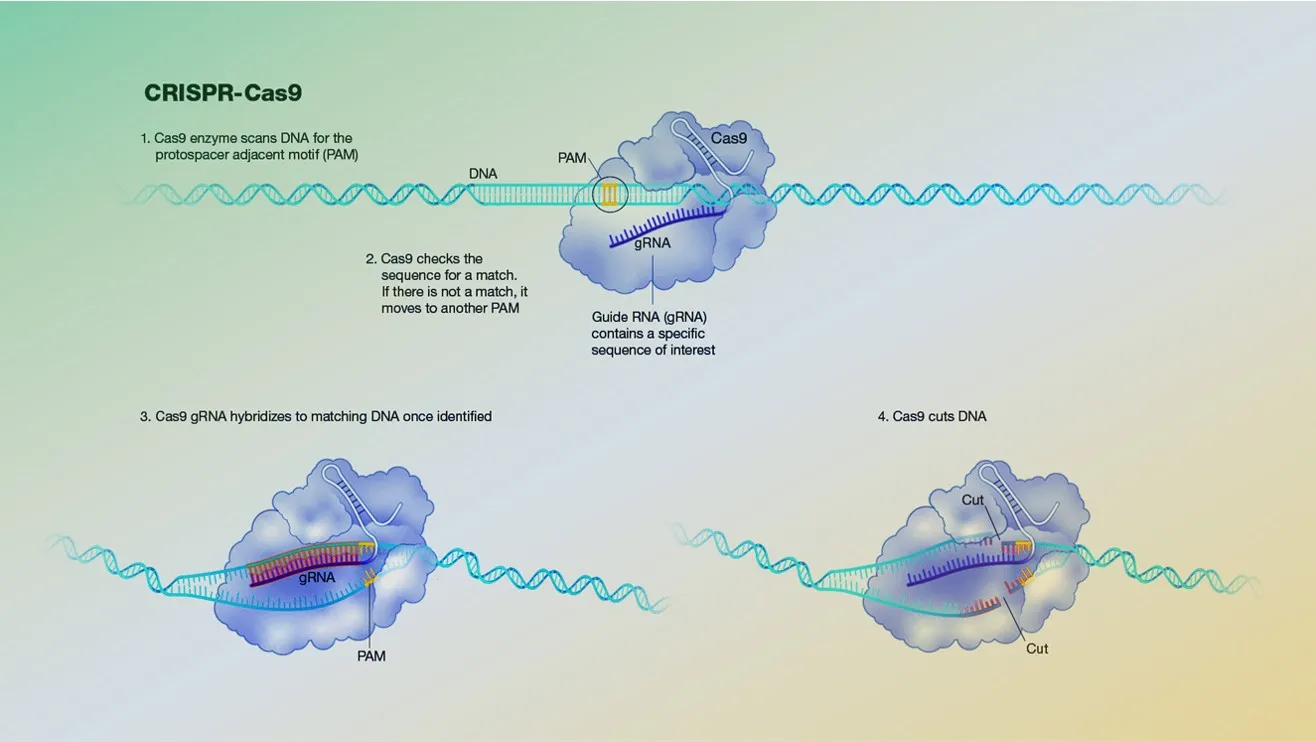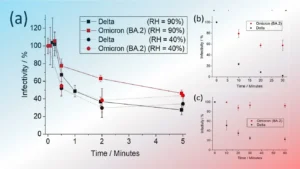What is Gene Editing and CRISPR?
CRISPR (short for “clustered regularly interspaced short palindromic repeats”) is a technology that research scientists use to selectively modify the DNA of living organisms. It is a bacterial immune system that has been modified for genome engineering.
The functions of CRISPR and CRISPR-associated (Cas) genes are essential in adaptive immunity in some bacteria, enabling the organisms to respond to and eliminate invading genetic material.
These repeats were initially discovered in 1987 in E. coli by Ishino, but their function was confirmed in 2007 by Barrangou and co-workers.
CRISPR-Cas9 enables geneticists and medical researchers to edit parts of the genome by removing, adding or altering sections of the DNA sequence.
It is currently the simplest, most versatile and precise method of genetic manipulation.
Working Mechanism
- CRISPR consists of two components: a “guide” RNA (gRNA) and a non-specific CRISPR-associated endonuclease (Cas9).
- Cas9 acts as a pair of ‘molecular scissors’ that can cut the two strands of DNA at a specific location in the genome so that bits of DNA can then be added or removed.
- The gRNA is a short synthetic RNA composed of a sequence necessary for Cas9-binding and a user-defined ∼20 nucleotide “targeting” sequence which defines the genomic target to be modified.
- Thus, one can change the genomic target of Cas9 by simply changing the targeting sequence present in the gRNA.
Applications of Gene Editing
Targeted genome engineering:
The system can be used to facilitate a wide variety of targeted genome engineering applications. TheCas9 nuclease has enabled efficient and targeted genome modification in many species that have been intractable using traditional genetic manipulation techniques.
Rapid Generation of Cellular and Animal Models:
Cas9-mediated genome editing has enabled accelerated generation of transgenic models and expanded biological research beyond traditional animal model organisms.
Functional Genomic Screens:
The efficiency of genome editing with Cas9 makes it possible to alter many targets in parallel, thereby enabling genome-wide functional analysis to identify genes that play an important role in a phenotype of interest.
Transcriptional Modulation:
The technique may repress gene action which can be used in silencing the desired genes.
Epigenetic Control:
Complex genome functions are controlled by the highly dynamic process of epigenetic changes. CRISPR method can bring about desired epigenetic modifications.
Cas9 as a Therapeutic Molecule for Treating Genetic Disorders:
Cas9 can be used as a therapeutic technology for treating genetic disorders. For a monogenic recessive disorder due to loss-of-function mutations (such as cystic fibrosis, sickle-cell anemia, or Duchenne muscular dystrophy), Cas9 may be used to correct the causative mutation.
Prospect of Designer Babies
Designer baby is a term that refers to the product of a genetically engineered baby. These babies are “designed” (fixed/changed) while still in the womb to achieve more desired health (being free from some diseases), looks, skills, or talents.
How can it be done?
- In medicine and (clinical) genetics pre-implantation genetic diagnosis (PGD or PIGD) (also known as embryo screening) refers to procedures that are performed on embryos prior to implantation, sometimes even on oocytes prior to fertilization.
- When used to screen for a specific genetic disease or for risk of getting a disease, its main advantage is that the method makes it highly likely that the baby will be free of the disease under consideration.
- This step can be followed by genetic manipulation of the egg or the zygote. Here, the standard recombinant DNA Technology is applied. After this, once again the genetic screening is done.
- If the desired genetic traits have successfully been introduced, then the zygote or the early embryo arising from it can be approved for implantation. Implantation can be done in a normal or surrogate mother.
- After the normal gestation, a “designer baby” with desired traits is born.
Also Read:
What is Gene Therapy and Mitochondrial Disease?
Human Genome Project (HGP) and its Significance












1 thought on “What is Gene Editing and CRISPR with Working Mechanism”